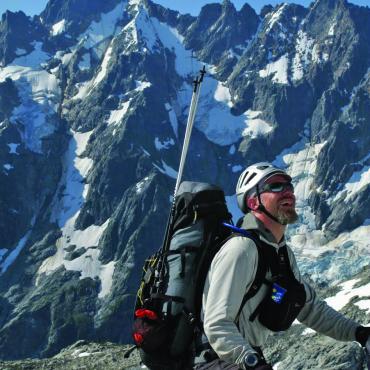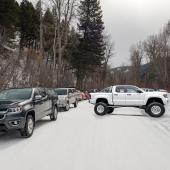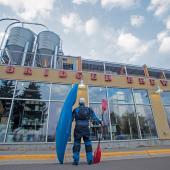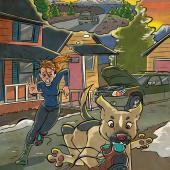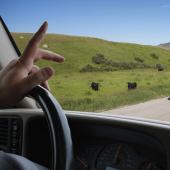Potty Talk
Somebody's gotta say it...
Have you been to a place where the most pristine alpine-lake views were spoiled by toilet paper strewn across the landscape? Have you seen and smelled half-dug holes overflowing with human excrement? Have you been to local trails lined with colorful poop-filled bags sitting on the side of the trail? This is a surefire way to ruin the aesthetic of a wildly beautiful place, not to mention a health hazard by contaminating water sources.
I don’t think people trash places intentionally. $#!+ happens. But when nature calls, we all need to be prepared. There are rules of engagement that keep forests pristine, clean, safe, and attractive. Follow them.
Plan for Potty Time
When there is the luxury of a trailhead outhouse, use it.
These generally exist in high-traffic areas and places that have the budget to permit and build an outhouse. Be prepared for the toilet-paper stocking situation to be variable. Packing your own TP or wet wipes (make sure they are biodegradable) is a good backup plan.
In locations where there are limited facilities or long morning lines to the privy, please train your bowels to release quickly on command. Forcing lines of agonizing people to wait for what seems like an eternity should be avoided.
Training your bowels to operate like a Swiss watch is another conversation, but some tips include eating plenty of roughage and timing your coffee intake to operate as a laxative. I have a friend that took a morning dip (tobacco) that got things moving, although I wouldn’t necessarily recommend that.
With the right preparation, taking care of business can become an enjoyable part of your outdoor experience, instead of something to dread.
Pack It Out
Bags aren’t just for dogs.
Always bring along extra bags, be they zip-locks, small doggie bags, or larger produce bags. They can be used to pack, and double-seal, all manner of waste, particularly used toilet paper.
When I was a kid, the local park was strewn with dog feces. At some point, city ordinances across the country decided it would benefit everyone to require cleaning up after your pup. Now, it is commonplace to find dog-waste stations equipped with small plastic bags and disposal receptacles.
If you simply hate carrying your dog’s waste out, make Fido pack it out himself. Dog packs are great for leashes, snacks, and packing out doggy waste. Anything is better than leaving the bag on the side of the trail. Many trailheads have receptacles for dog waste where they can be deposited.
Other places to keep in mind are zones where waste doesn’t biodegrade fast, like high-altitude areas. Using blue bags is common practice in harsh alpine conditions. You’ll notice they’re required on popular mountains like Mount Rainier. These bags are similar to the green bags that you find at any dog park, except they come with zip ties and a translucent outer bag. The double bagging helps to contain the odor. Big-wall climbers use a similar technique with an inner plastic bag packed into a carabiner-compatible “poop tube.”
My wife and I typically use dog-waste bags for our toddler, who doesn’t always feel like taking care of business until we are miles down the trail.
Always pack out other biohazards (don’t bury) such as feminine-hygiene products.
Bury It
The trowel never touches…
In lower elevations where biomatter exists, soil bacteria and organisms break down the waste and reabsorb it into the environment. Boy Scout rule, if I remember right, is to dig a latrine trench or cat hole at least 6” deep and far from visual or olfactory proximity. Latrines should be at least 200 feet (or 75 steps) from any water source. Bury the waste with soil and cover with needles or topping of your choice that matches local decor. Make sure you are a good distance away from any trails as well. See if you can be a bathroom ninja and “leave no trace.” Use sticks, rocks, or a fancy digging trowel. Remember, the trowel never touches…
Keep in mind that a shallow poop grave may be exhumed by foraging critters. Nasty, yes, but the best way to deal with this eventuality is to bury your human waste and pack out the toilet paper. It’s a less-gross package for you to carry and a less-gross sight for everyone else who comes behind you.
In Summary
1. Use the facilities (if they exist).
2. Bury it or pack it out—either way, no one should ever be able to tell you “went there.”
Extra Tips
Wet-wipes can double as cleansing for messy parts. On longer days, keeping things clean and chafe-free can save you from getting chapped. You know what I mean if you have experienced miles of this agony. If you’re without TP, try smooth rocks (not too abrasive), leaves (not poison ivy or stinging nettles), or my personal favorite, snow. Bring a small container of hand sanitizer (or an extra wet-wipe) for afterward.
With the right preparation, taking care of business can become an enjoyable part of your outdoor experience, instead of something to dread. Not to mention, our forests (and the people out in them) will thank you for it.


